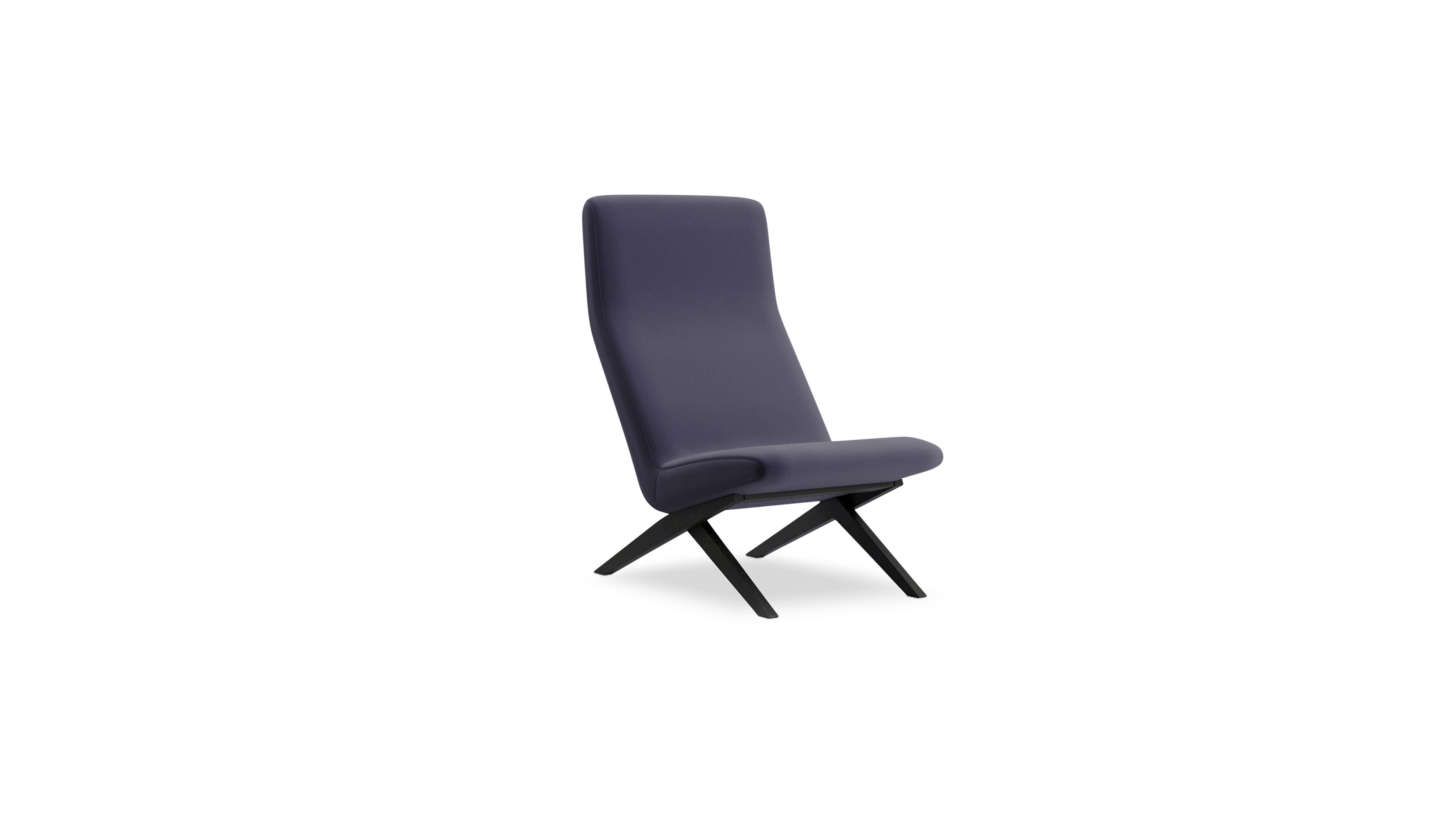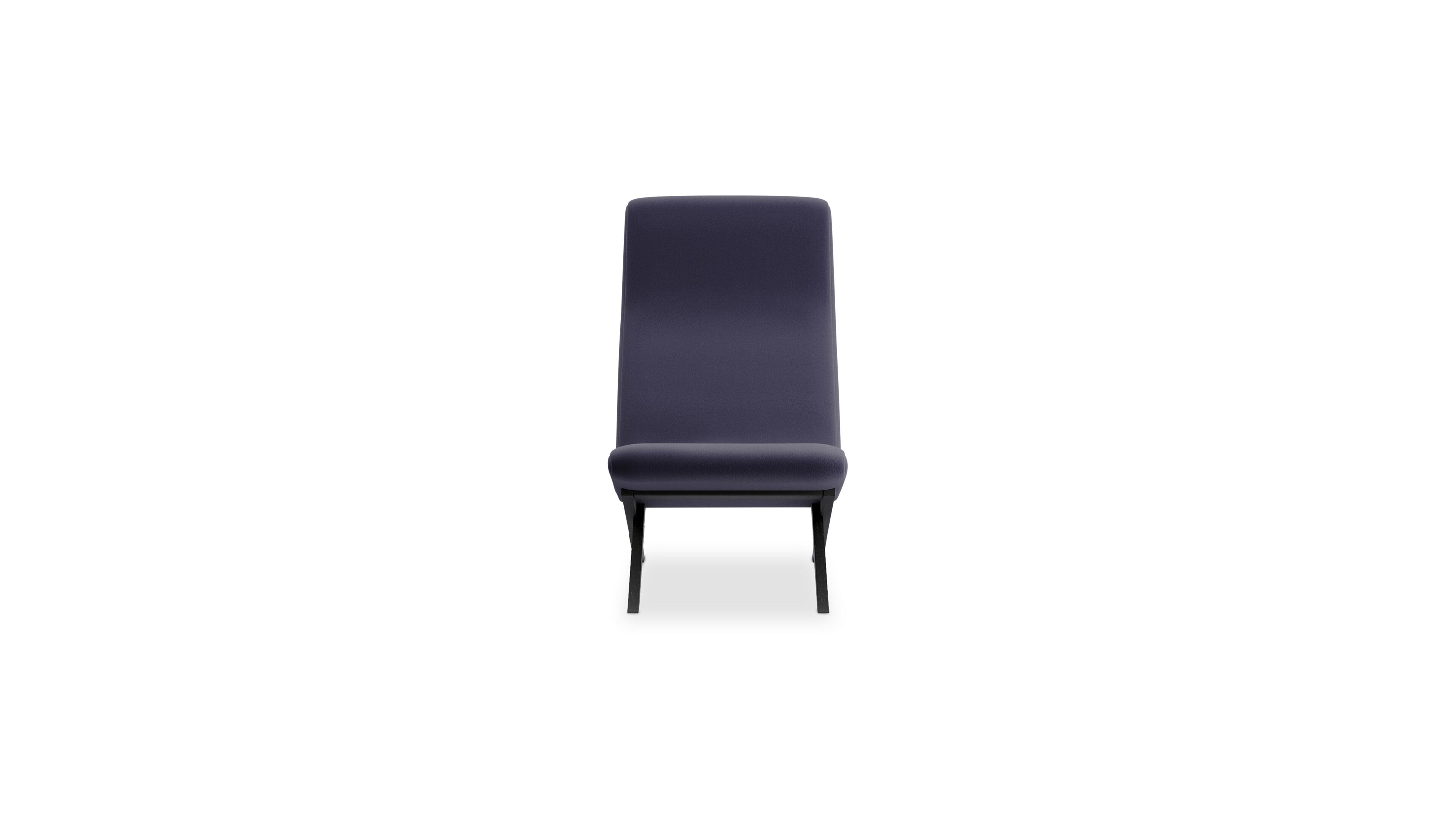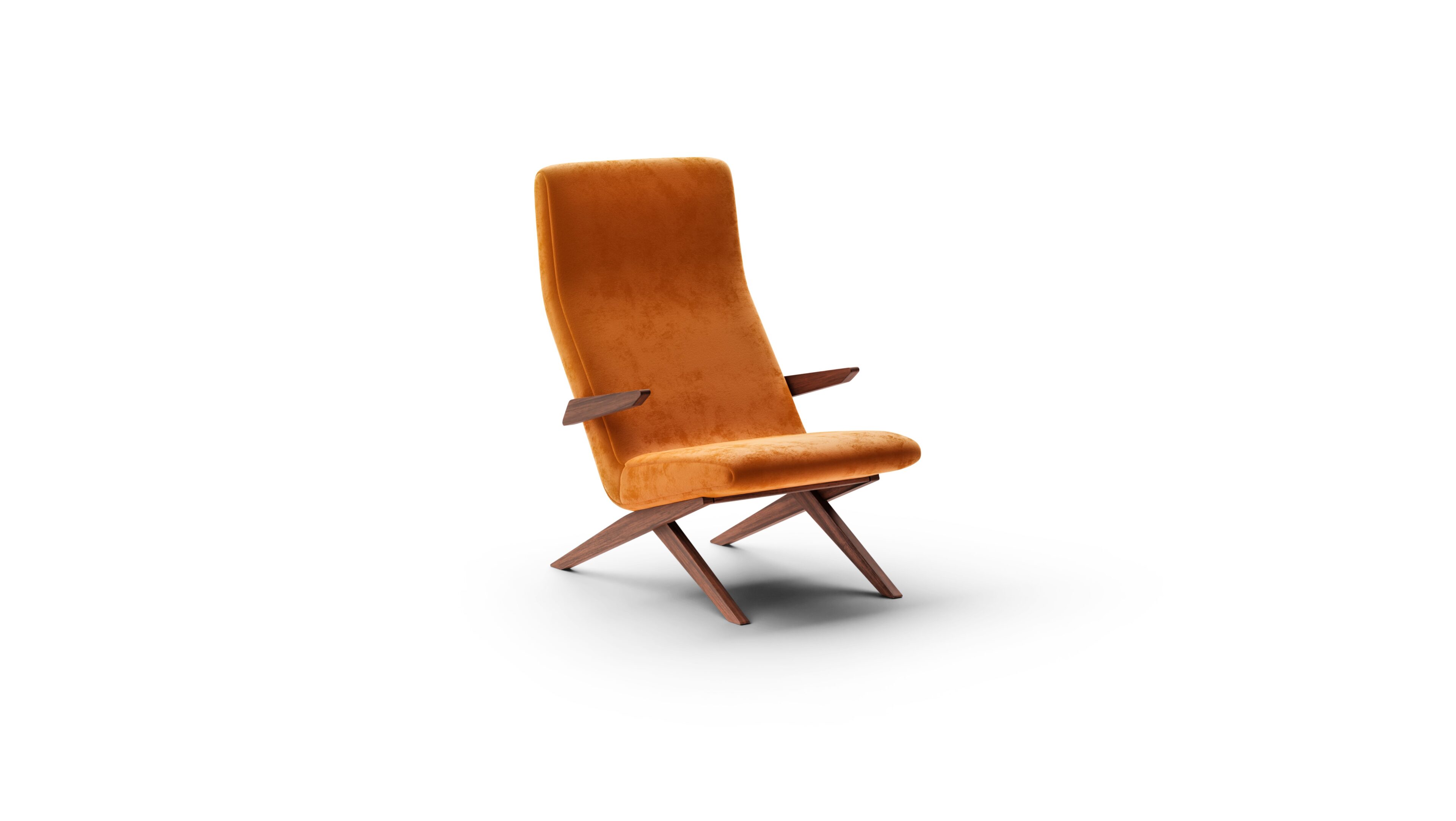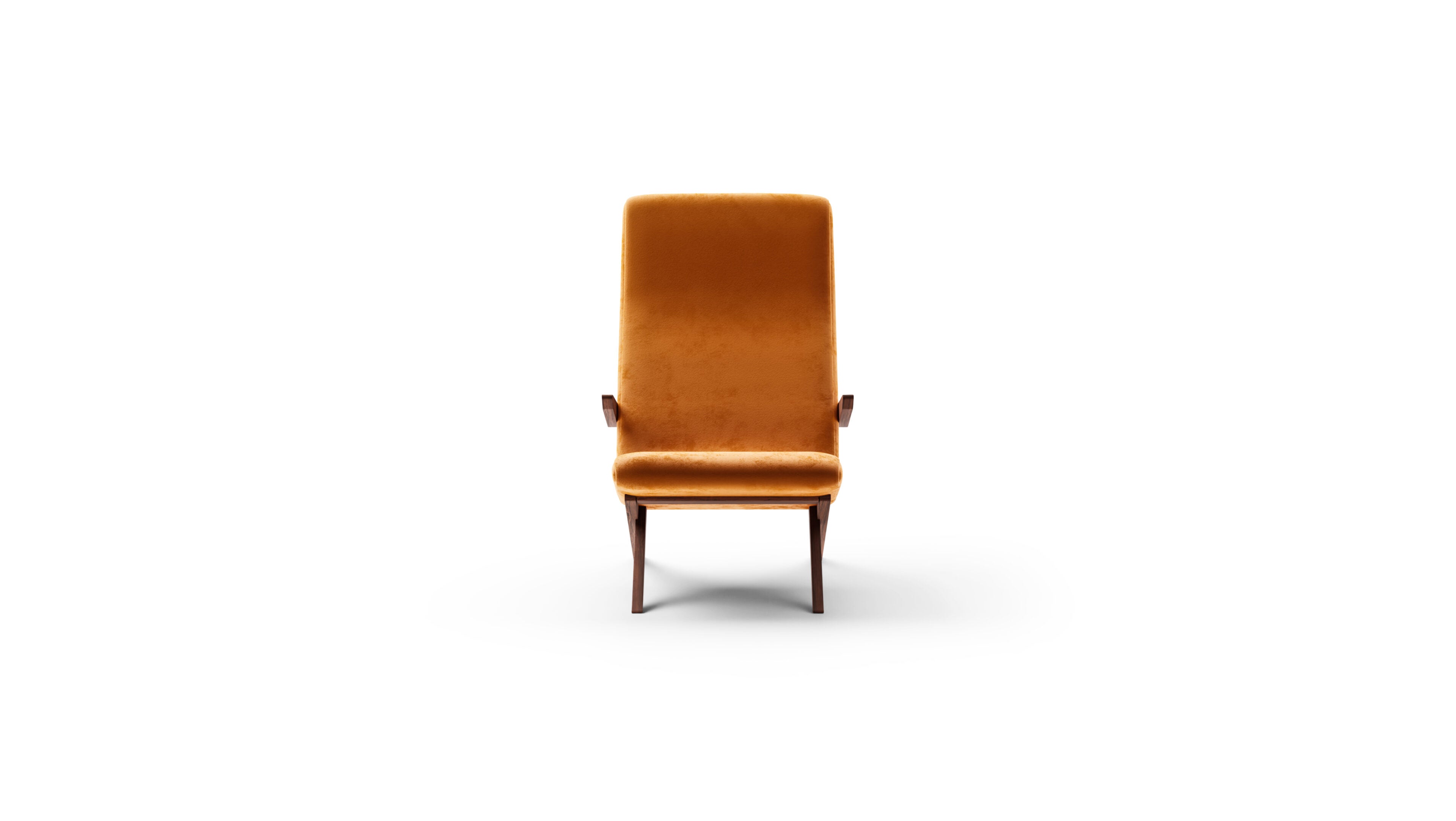
b. 1932
Bodil Kjær

Bodil Kjær
Bodil Kjær (b. 1932) is a renowned Danish designer recognized for her contributions to furniture design, interior design, and architecture. She began her career after studying at the Royal Danish Academy of Fine Arts, School of Architecture in Copenhagen. Kjær is known for her approach to creating environments that facilitate human interaction and productivity. Her furniture designs, including the High Back Chair and High Back Armchair(1955), consider the context in which they are used, focusing on ergonomics and geometric shapes. Kjær's work enhances spaces' intention and aesthetic with an emphasis on spatial dynamics and natural surroundings.
Read More
Early Life and Education
Bodil Kjær was born in 1932 and raised on her family's ancestral farm near Horsens, Denmark. This upbringing instilled in her an appreciation for quality and aesthetics that would influence her future career. Kjær's education was diverse and international, taking her from Denmark to England and the United States. This global educational experience helped develop her diverse skill-set and perspective, laying the foundation for her future work in architecture, design, and planning.
Career and Notable Works
Bodil Kjær's career began in her own offices in Copenhagen and London, where she practiced as an architect, designer, and planner. She worked extensively in teams to create healthy and flexible work environments for various institutions and companies. Between 1955 and 1963, while designing public interiors, Kjær developed a series of architectural elements to solve functional and aesthetic problems. These designs, though not initially intended for production, were eventually manufactured and marketed in the USA and Europe. Some of her notable works include:
1. High-back Chair: Known for its clean lines, ergonomic design, and attention to detail.
2. BK1 - BK4 Furniture Series (1959): Including the BK1 lounge chair and BK2 two-seater sofa, characterized by solid teak construction and simple lines.
3. BK3 Dining Table: Exemplifies Kjær's functionalist approach with its clean lines and ability to be disassembled for easy transport.
4. BK11 Outdoor Lounge Chair: Designed with solid teak construction and weather-resistant cushions.
5. Rosewood Cabinet (1959): Featuring seven drawers and a drop-front door, combining functionality with aesthetic appeal.
Design Philosophy
Bodil Kjær's design philosophy is characterized by:
1. Functionalism: Prioritizing the purpose and utility of a design over its aesthetic appeal.
2. Architectural Approach: Viewing her furniture creations as architectural elements rather than standalone pieces.
3. Problem-Solving: Aiming to solve functional, economic, and aesthetic problems through her designs.
4. Simplicity and Strength: Creating designs characterized by clean lines and durability.
5. Contextual Consideration: Always considering the context of her designs, with respect for nature and an interest in societal dynamics.
Impact and Legacy
Bodil Kjær's impact on the world of design endures because of her commitment to functionalism and modernism, which has influenced generations of designers in Denmark and throughout the world. Her works are celebrated for their timeless appeal and practicality. Kjær's influence is present throughout her disciplines. As an architect, she helped pioneer flexible work environments that have fundamentally shaped the way we work today. Her designs, which she refers to as "elements of architecture," have been used by pre-eminent modernist architects, including Marcel Breuer and Paul Rudolph.
Kjær's work has been recognized with numerous accolades. Her desk design, for instance, was heralded as 'the most beautiful desk in the world.' Her pieces have been featured in prestigious institutions such as the Yale School of Architecture, Wellesley College, and the Massachusetts Institute of Technology. Her iconic desk even appeared in three James Bond movies, further cementing her influence in popular culture.
Bodil Kjær FAQs
What is Bodil Kjær known for?
Bodil Kjær is renowned as a Danish architect and designer. She gained international recognition for her contributions to architectural and furniture design, particularly during the mid-20th century.
How did Bodil Kjær contribute to design?
Kjær's designs are characterized by their functionality, clarity, and simplicity. She contributed to design by integrating aesthetics with practicality. Her work has influenced the direction of modern design.
What are some of Bodil Kjær's most famous designs?
Some of Kjær's most famous designs include the BK1 and BK2 outdoor furniture series, the Indoor-Outdoor series, the High Back Chair, and the Desk, a piece of office furniture designed for the SAS Royal Hotel in Copenhagen.
Collection: Bodil Kjær
-
High Back Lounge Chair: Armless
Vendor:Hommage À Bodil KjærRegular price From $1,100.00 USDRegular price -
High Back Lounge Chair: Armchair
Vendor:Hommage À Bodil KjærRegular price From $1,200.00 USDRegular price
Bodil Kjær
Early Life and Education
Bodil Kjær was born in 1932 and raised on her family's ancestral farm near Horsens, Denmark. This upbringing instilled in her an appreciation for quality and aesthetics that would influence her future career. Kjær's education was diverse and international, taking her from Denmark to England and the United States. This global educational experience helped develop her diverse skill-set and perspective, laying the foundation for her future work in architecture, design, and planning.
Career and Notable Works
Bodil Kjær's career began in her own offices in Copenhagen and London, where she practiced as an architect, designer, and planner. She worked extensively in teams to create healthy and flexible work environments for various institutions and companies. Between 1955 and 1963, while designing public interiors, Kjær developed a series of architectural elements to solve functional and aesthetic problems. These designs, though not initially intended for production, were eventually manufactured and marketed in the USA and Europe. Some of her notable works include:
1. High-back Chair: Known for its clean lines, ergonomic design, and attention to detail.
2. BK1 - BK4 Furniture Series (1959): Including the BK1 lounge chair and BK2 two-seater sofa, characterized by solid teak construction and simple lines.
3. BK3 Dining Table: Exemplifies Kjær's functionalist approach with its clean lines and ability to be disassembled for easy transport.
4. BK11 Outdoor Lounge Chair: Designed with solid teak construction and weather-resistant cushions.
5. Rosewood Cabinet (1959): Featuring seven drawers and a drop-front door, combining functionality with aesthetic appeal.
Design Philosophy
Bodil Kjær's design philosophy is characterized by:
1. Functionalism: Prioritizing the purpose and utility of a design over its aesthetic appeal.
2. Architectural Approach: Viewing her furniture creations as architectural elements rather than standalone pieces.
3. Problem-Solving: Aiming to solve functional, economic, and aesthetic problems through her designs.
4. Simplicity and Strength: Creating designs characterized by clean lines and durability.
5. Contextual Consideration: Always considering the context of her designs, with respect for nature and an interest in societal dynamics.
Impact and Legacy
Bodil Kjær's impact on the world of design endures because of her commitment to functionalism and modernism, which has influenced generations of designers in Denmark and throughout the world. Her works are celebrated for their timeless appeal and practicality. Kjær's influence is present throughout her disciplines. As an architect, she helped pioneer flexible work environments that have fundamentally shaped the way we work today. Her designs, which she refers to as "elements of architecture," have been used by pre-eminent modernist architects, including Marcel Breuer and Paul Rudolph.
Kjær's work has been recognized with numerous accolades. Her desk design, for instance, was heralded as 'the most beautiful desk in the world.' Her pieces have been featured in prestigious institutions such as the Yale School of Architecture, Wellesley College, and the Massachusetts Institute of Technology. Her iconic desk even appeared in three James Bond movies, further cementing her influence in popular culture.
Bodil Kjær FAQs
What is Bodil Kjær known for?
Bodil Kjær is renowned as a Danish architect and designer. She gained international recognition for her contributions to architectural and furniture design, particularly during the mid-20th century.
How did Bodil Kjær contribute to design?
Kjær's designs are characterized by their functionality, clarity, and simplicity. She contributed to design by integrating aesthetics with practicality. Her work has influenced the direction of modern design.
What are some of Bodil Kjær's most famous designs?
Some of Kjær's most famous designs include the BK1 and BK2 outdoor furniture series, the Indoor-Outdoor series, the High Back Chair, and the Desk, a piece of office furniture designed for the SAS Royal Hotel in Copenhagen.



